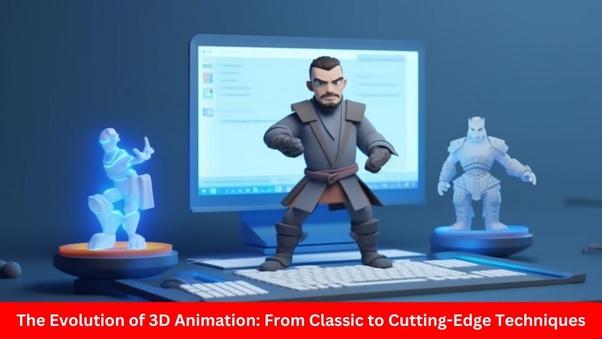The Evolution of 3D Animation: From Classic to Cutting-Edge Techniques

Introduction
3D animation has a long and fascinating history that has revolutionized the visual storytelling world. From its humble origins in the 1970s to today’s state-of-the-art techniques 3D animation continues to push the boundaries of innovation and technology.
Let’s take a look at some of the key moments that have shaped 3D animation’s evolution.
Origin
In the ’70s, computer graphics pioneers started experimenting with simple wireframe models and their first major success was the short “Westworld” (1973). In the film, a simple hand-drawn 2D animation was combined with a 3D wireframe model to show a computerized hand. This breakthrough ignited artists’ and computer scientists’ imaginations, setting the stage for future advances.
Advances in computer graphics
The 1980s saw the emergence of computer graphics technology. This led to the development of 3D modeling software such as AutoCAD, and Advanced Visualizer. These tools enabled artists to create complex 3D objects and scenes, but the rendering power was still limited, making it difficult to create realistic animations.
Leap to Pixar
Pixar first made waves in the 3D animation industry in 1986 with “Luxo, Jr.,” a pioneering short film that featured the world’s first photorealism in 3D animation. This film showed the potential for 3D animation to be used for storytelling and paved the way for the studio’s later success with feature films such as “Toy Story” (1995), which was the first feature-length.
Advancements in rendering
As computing power improved, so did 3D animation rendering. Developments such as ray tracing, and global illumination, improved the lighting and shadows of animated scenes, dramatically improving their visual quality. Movies such as “Shrek” (2001), “Finding Nemo” (2003), and “Avatar” (2009) all demonstrated the power of these advances.
Motion capture
In the early 2000s, motion capture technology was revolutionized by the introduction of digital character animations, in which real-life movement was recorded and converted into digital character animation. This technique introduced a whole new meaning to the term “motion capture,” as it allowed for a greater level of realism in characters, as well as more natural and more nuanced performances. Motion capture blurs the boundaries between animation and live-action.
Simulation and special effects
With the development of 3D animation, simulation and special effects became an essential part of the storytelling process. With fluid simulations, cloth simulations and particle systems, artists were able to create dynamic and beautiful scenes. Films such as “Frozen” (2013) showed the complex use of simulations to make snow and ice come alive and captivate audiences around the world.
VR and AR
With the development of virtual reality (VR) and augmented reality (AR), 3D animation became more accessible than ever before. Viewers immersed in animated worlds were able to create interactive experiences and create 360-degree storytelling. This opened up new possibilities for content creators and viewers.
Real-time rendering
Real-time rendering is one of the most recent innovations. Thanks to the powerful GPU and game engine, animators now can render their scenes in real time, allowing for faster iteration and more creative exploration.
3D animation has come a long way from its humble beginnings to state-of-the-art technology. Computer Graphics, Rendering, Motion Capture, Simulation, and Real-time Rendering have continually improved the quality and innovation of 3D content.
As technology advances, 3D animation’s potential continues to expand, offering audiences even more stunning and immersive experiences in the years to come.
